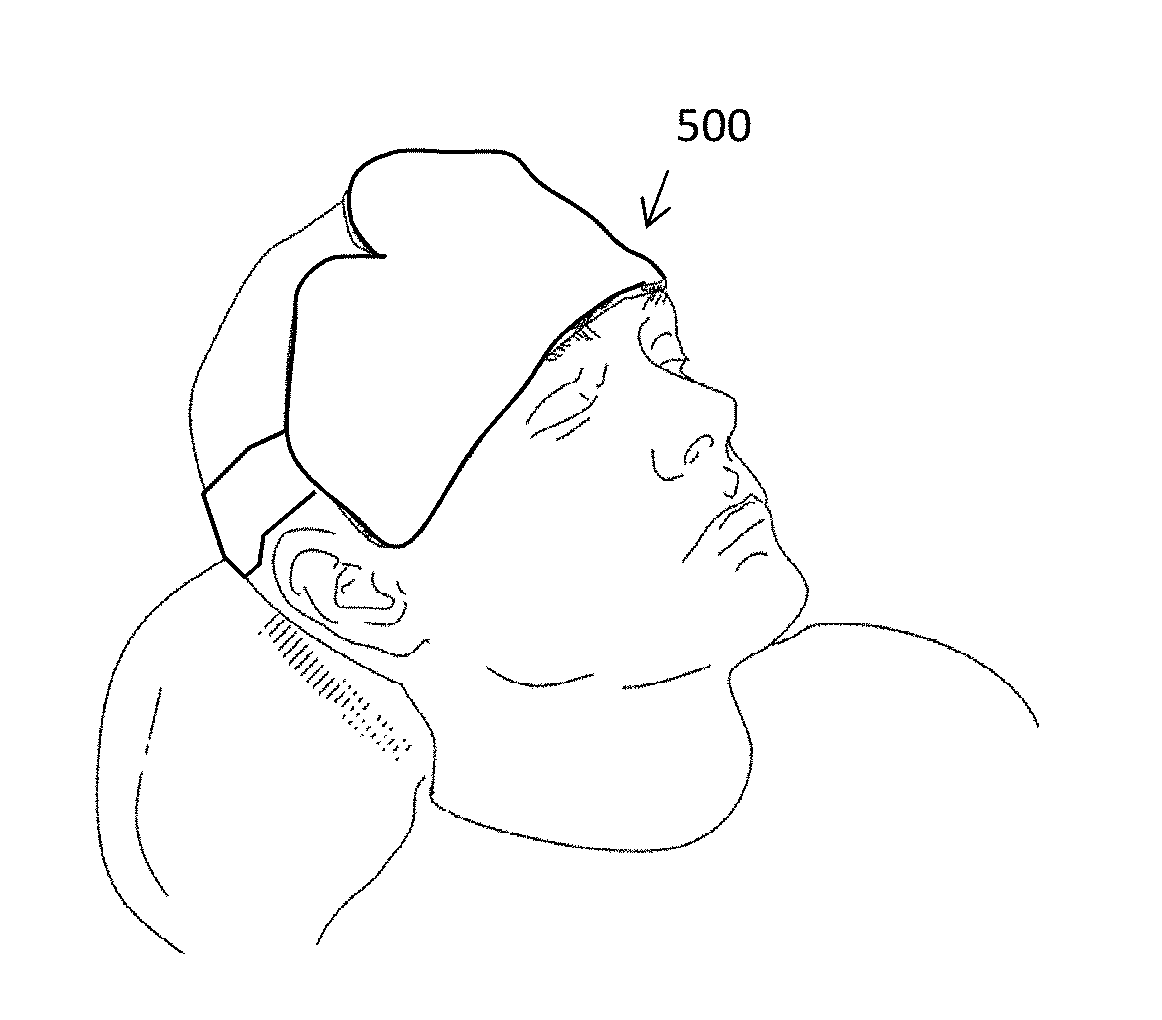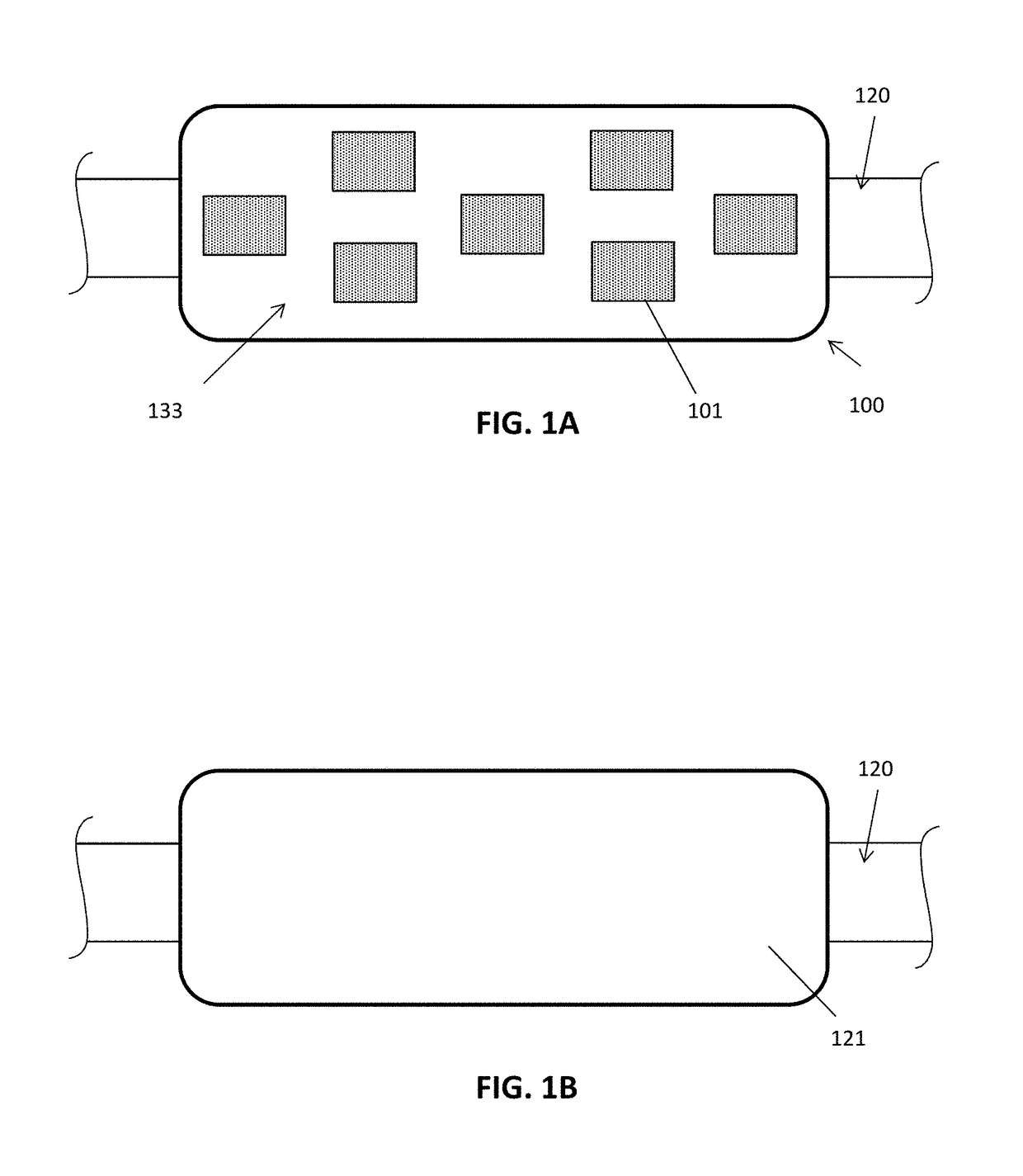Tetherless wearable thermal devices and methods of using them for treatment of sleeping and neurological disorders
a wearable thermal device and neurological technology, applied in the field of wearable thermal devices, can solve the problems of body influencing hypothalamic sleep and thermoregulatory centers, widespread and pervasive problem of poor sleep, and achieve the effects of reducing sleep onset latency, prolonging sleep duration, and enhancing sleep
- Summary
- Abstract
- Description
- Claims
- Application Information
AI Technical Summary
Benefits of technology
Problems solved by technology
Method used
Image
Examples
example
[0090]FIGS. 8A-8B illustrate an example of an apparatus for enhancing sleep onset and / or maintaining sleep and / or treating a sleep-related (e.g., neurological) disorder. In this example, a prototype forehead worn apparatus was built having a flexible, wearable substrate 807 that is thermally insulative, and through which a plurality of thermoelectric temperature regulators 803 are attached. The cooling side 803 of the thermoelectric temperature regulators are on the skin-facing side, while the warming side 805 are on the opposite side of the apparatus, as shown in FIG. 8B, configured to be worn facing away from the forehead.
[0091]In FIG. 8A, eight 15 mm by 15 mm thermoelectric temperature regulators are shown attached at discrete location for contacting the surface of a patient's skin. Each thermoelectric temperature regulators is connected (in the prototype wires 809 are visible, though they may be integrated into the fabric and / or covered. The thermoelectric temperature regulators...
PUM
 Login to View More
Login to View More Abstract
Description
Claims
Application Information
 Login to View More
Login to View More - R&D
- Intellectual Property
- Life Sciences
- Materials
- Tech Scout
- Unparalleled Data Quality
- Higher Quality Content
- 60% Fewer Hallucinations
Browse by: Latest US Patents, China's latest patents, Technical Efficacy Thesaurus, Application Domain, Technology Topic, Popular Technical Reports.
© 2025 PatSnap. All rights reserved.Legal|Privacy policy|Modern Slavery Act Transparency Statement|Sitemap|About US| Contact US: help@patsnap.com



